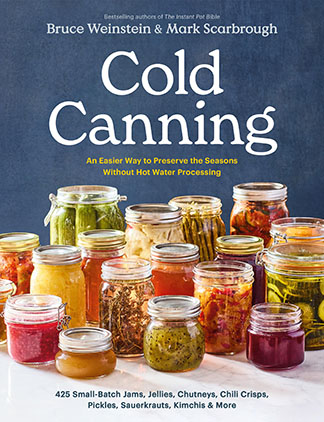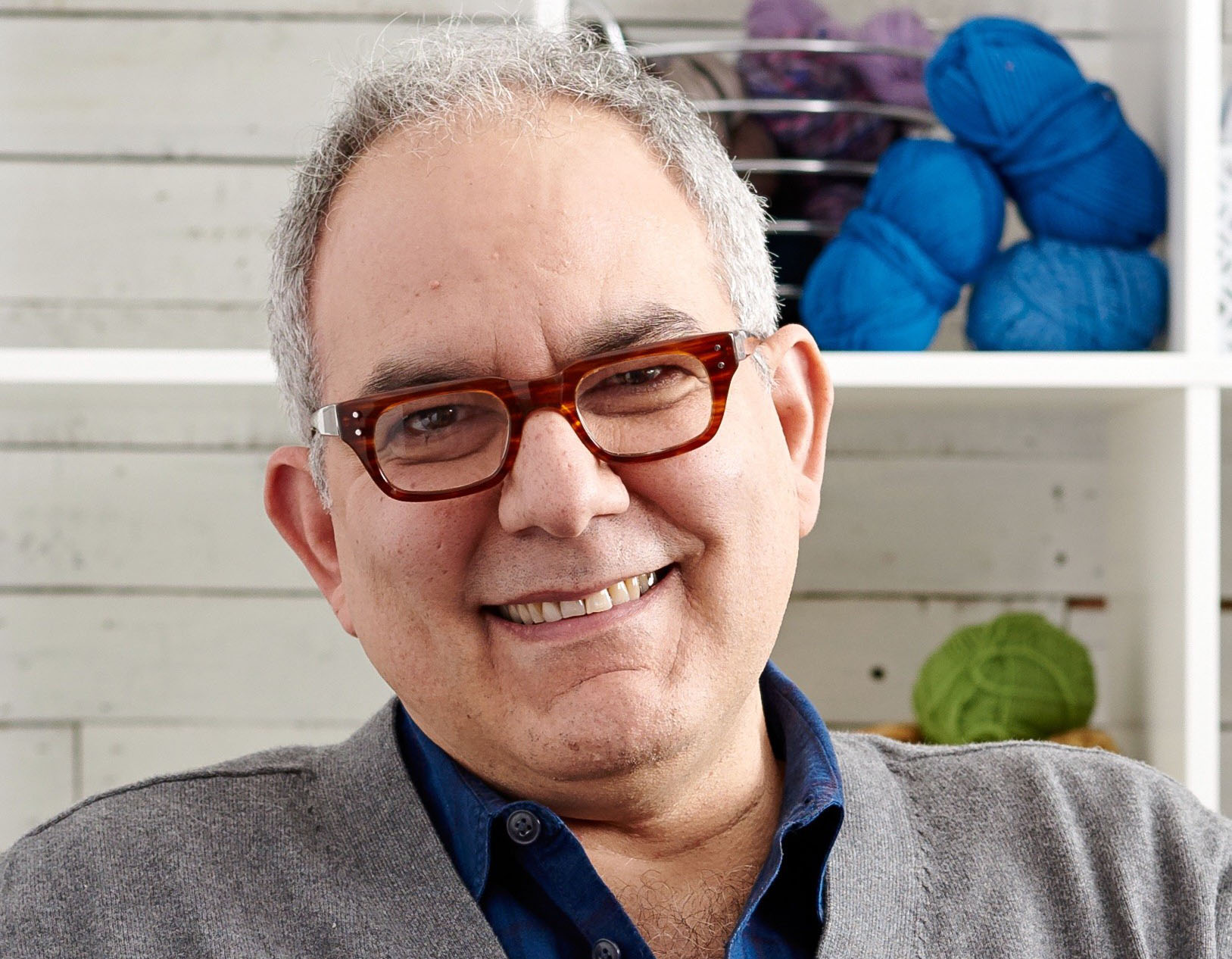Bruce Weinstein’s eating philosophy is simple: cook, share food, enjoy.
“Eat real ingredients. … It’ll make you feel better,” Weinstein told the Journal. “[You’ll be] easy to get along with and people will like you.”
Weinstein is a food writer and author of 40 books, 38 of which are cookbooks. His latest, written with husband and frequent collaborator Mark Scarbrough, is “Cold Canning: The Easy Way to Preserve the Seasons Without Hot Water Processing.”
 “Cold Canning” offers a primer on easy, safe, budget-friendly preservation. The book has 425 recipes for small-batch jams, jellies, chili crisps, pickles, krauts, kimchis, and more that will safely keep for months to years in the refrigerator or – with the exception of pickle-like foods – in the freezer.
“Cold Canning” offers a primer on easy, safe, budget-friendly preservation. The book has 425 recipes for small-batch jams, jellies, chili crisps, pickles, krauts, kimchis, and more that will safely keep for months to years in the refrigerator or – with the exception of pickle-like foods – in the freezer.
“One of the things that I love about doing this small batch and no processing is that I can use less sugar because I’m not trying to make it shelf stable,” Weinstein explains. “You don’t need to have eight cups of sugar to seven cups of berries; you can get away with three cups of sugar to five cups of berries”
That’s a huge difference in taste and in health.
“Do I think that we should all take all the sugar out of our diet? No, because then life would not be enjoyable at all,” he continues. “Everything in moderation; and, no, I should not be eating a pint of ice cream every day, and I shouldn’t eat cake every day, and I don’t want to sit down to an entire jar of jam, but I do want a nice, thick spread of jam on my toast.”
Weinstein and Scarbrough are also the bestselling authors of the “Instant Pot Bible” series of cookbooks, owners of MediaEats, a culinary production company, the longest-serving columnists on WeightWatchers.com and regular contributors to the “Washington Post,” “Fine Cooking,” and “Cooking Light.”
The duo had other careers before diving into the food space. Weinstein went to culinary school and then worked in advertising for 20 years before becoming a food writer. Scarbrough was an English professor; he still teaches literature.
As an aside: over the summer they posted a video on their social media platforms with Scarbrough explaining the proper way to make toast.
“We’ve watched people make toast; they spread the tiniest half a teaspoon of jelly on a piece of bread,” Weinstein explains. “No, you put a big dollop and you spread it and you get the flavor and enjoy it.”
Don’t do that every hour on the hour. But you can do it every day!
“There’s a lot less sugar in that toast and jam than there is in a slice of cheesecake,” he says.
Bruce Weinstein shares what led to his love of cooking, his professional journey, and his favorite Jewish foods. He also talks about the joy and ease of cold canning, some of his early cookbooks his two non-cookbooks and his recipe for blackberry conserve. The recipe is below.
Learn more at CookingwithBruceandMark.com. Follow @CookingwithBruceandMark on Facebook, Instagram and TikTok, and @CookingWithBruceMark on YouTube.
For the full conversation, listen to the podcast:

MAKES: about 4 cups (960 ml)
FRIDGE: up to 3 weeks
FREEZER: up to 1 year
May be traditionally canned.
A great conserve involves a layering of flavors: caramelized sugar (yet not as much as in most jams), earthy notes from nuts, and bright pops from whatever fruit is at the base, plus a few aromatics to round things out. This particular conserve may well be our favorite, the one we make time and again, especially when we find blackberries on sale. Although it’s terrific with cream cheese or Brie, and great on charcuterie boards, we even like it on buttered toast, a less-sweet treat with our morning coffee.
1 1/3 pounds (605 g) fresh blackberries or thawed frozen blackberries (about 4 cups for either)
2½ cups (500 g) granulated white sugar
3 tablespoons (36 g) chopped crystallized ginger
2 tablespoons (30 ml) lemon juice
¼ cup (30 g) chopped walnuts
1/8 teaspoon grated nutmeg
- Put the blackberries in a medium saucepan. Use a potato masher or the back of a wooden spoon to lightly crush them against the inside and bottom of the pan. There should be some pieces visible. Don’t make a puree.
- Set the pan over medium-high heat and add the remaining ingredients. Stir constantly to dissolve the sugar. Bring to a boil, stirring often.
- Reduce the heat to low and simmer, stirring more and more often to avoid scorching, until thickened and jam-like, about 12 minutes.
- Turn off the heat, remove the pan from the burner, and set aside for 1–2 minutes. Skim any foamy impurities with a tablespoon.
- Transfer to four clean ½ pint (236 ml) jars or other containers, leaving about ½ inch (1 cm) headspace in each. Cover or seal. Cool at room temperature for no more than 1 hour, then refrigerate or freeze.
- Stir everything together in a very large saucepan. Set the pan over low heat and bring to a simmer, stirring quite often.
More
For the walnuts, you can substitute an equivalent amount by weight of any chopped, shelled nut: skinned hazelnuts, pecans, pine nuts, or pistachios. (Do not use salted nuts.)
Excerpted from COLD CANNING by Bruce Weinstein and Mark Scarbrough. Copyright © 2025 by Bruce Weinstein and Mark Scarbrough. Photograph by Eric Medsker. Used with permission of Voracious, an imprint of Little, Brown and Company. New York, NY. All rights reserved.
Debra Eckerling is a writer for the Jewish Journal and the host of “Taste Buds with Deb.” Subscribe on YouTube or your favorite podcast platform. Email Debra: [email protected].




